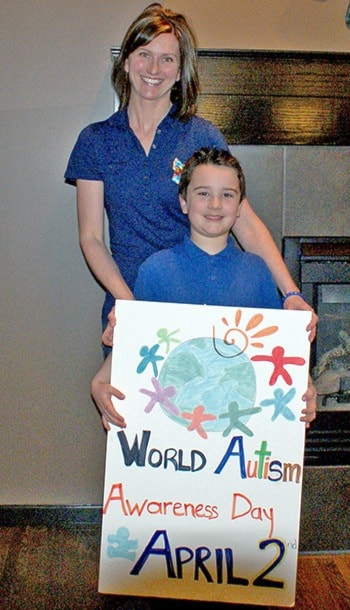This Tuesday, Cloverdale’s Julie Macchabee will be dressing in the colour blue, and she’ll be switching her family’s outdoor house lights blue to match.
Pinning a colourful puzzle ribbon to her ensemble will be the final touch as the mother of two marks World Autism Awareness Day April 2 in a show of support for other families dealing with this disorder.
The lapel ribbon symbolizes the complexity of autism while also representing hope for acceptance.
Autism is a range of neurological disorders that affect the way a person interacts and communicates with others. It also affects how they make sense of the world around them.
It’s four times more likely to occur in boys than girls.
Julie’s son, Connor, who has autism, his older sister, Emma, and dad Dan are proud supporters of World Autism Awareness Day, too.
“We make awareness posters as a family and will share ribbons with our school community of George Greenaway Elementary on April 2,” Julie says.
Last year, the school held an assembly and walk for awareness.
In stepping forward, Macchabee hopes to foster support for the inclusion of people with autism in Cloverdale, whether it’s at school, in the workplace or out in the community.
Children with autism experience the world in distinct ways; many are sensitive to sights, sounds, smells and other stimuli, and can become easily overwhelmed on an outing, leading to screaming, spinning, or temper tantrums.
She says supporting families living with autism can be as simple as understanding the challenges parents face, and by offering them a sympathetic smile as they work to correct those behaviours.
She also wants to share positive news: many children with autism are able to make remarkable progress, especially if they receive intensive, individual instruction and therapy in the first few years of life.
There are several behavioural red flags indicating a child may have autism, she says.
If a child is failing to meet common developmental milestones, ask a pediatrician or a medical professional for an evaluation.
